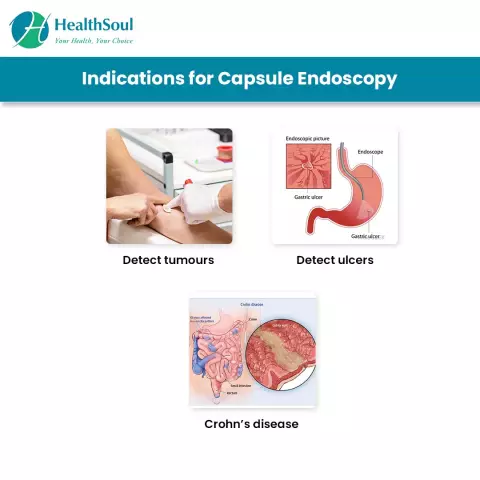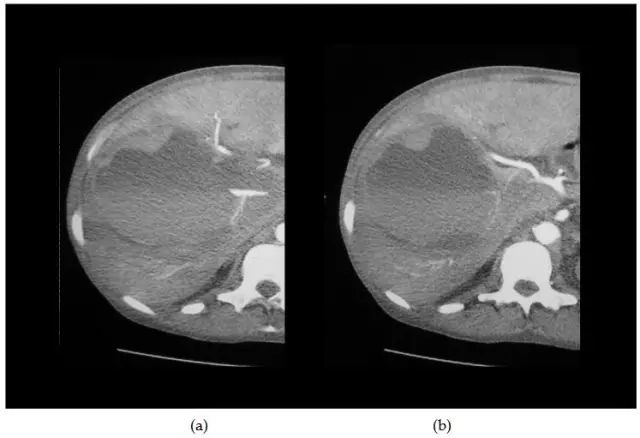- Author Rachel Wainwright [email protected].
- Public 2023-12-15 07:39.
- Last modified 2025-11-02 20:14.
Rectoromanoscopy

Sigmoidoscopy is an endoscopic examination in which the mucous membrane of the rectum and distal sigmoid colon is examined (Latin rectum - rectum, sigma romanum - sigmoid colon). The study is carried out using a special apparatus - a sigmoidoscope, which is a tube (25-35 cm long and 2 cm in diameter) with lenses, an illuminator and an apparatus for air injection.
Sigmoidoscopy in Russia began to be performed back in the 19th century (S. P. Fedorov and his students). Currently, this manipulation is widely used in medicine to detect bowel diseases.
Sigmoidoscopy allows you to examine the intestinal mucosa for 15-30 cm from the anus and identify various pathologies, and during this procedure, it is possible to take a biopsy (a tissue site for histological examination under a microscope). This study is also a preparatory stage before other studies of the intestine (irrigoscopy, colonoscopy).
Indications for sigmoidoscopy
- Suspicion of oncological pathology of the rectum or sigmoid colon;
- Intestinal bleeding, mucus or pus from the rectum;
- Stool disorders (prolonged constipation, diarrhea, or a change in the nature of the stool);
- Chronic inflammatory diseases of the rectum (eg, chronic paraproctitis);
- Chronic hemorrhoids (to assess the state of internal hemorrhoids);
- In men, with a suspicion of a tumor of the prostate gland, in women - with a suspicion of a tumor in the pelvic area;
- As a preparatory stage before further examination of the intestines (irrigoscopy, colonoscopy);
Intestinal sigmoidoscopy can be a therapeutic procedure, for example, with a small rectal polyp, it is possible to remove the formation endoscopically.
Contraindications
Contraindications to this manipulation are the serious condition of the patient (for example, severe cardiovascular pathology, severe respiratory failure, cerebrovascular accident), when the risk of sigmoidoscopy exceeds its feasibility.
Acute inflammatory diseases in the anus (acute paraproctitis, acute hemorrhoids with thrombosis of nodes, anal fissure) are relative contraindications to the examination.
In emergency cases (for example, profuse intestinal bleeding with loss of consciousness) intestinal sigmoidoscopy can be performed on almost any patient for health reasons.
Technique for sigmoidoscopy
This manipulation is performed in a specially equipped office. Usually sigmoidoscopy is performed without anesthesia (the procedure is practically painless). In some cases, local anesthesia is possible (for example, if the patient has an anal fissure or traumatic injury in the anus). Intravenous anesthesia is used in rare cases at the insistence of the patient.

Before sigmoidoscopy, a digital examination of the rectum must be performed first. During manipulation, the position of the patient can be knee-elbow (the patient is on all fours, leaning on the knees and elbows) or lying on the left side.
The rectoscope tube is inserted 4-5 cm after abundant lubrication of the anus with vaseline oil. Then the manipulation is carried out under the control of the eye, air is pumped into the tube of the apparatus to straighten the folds of the mucous membrane. It is necessary to explain to the patient that as the rectoscope progresses, he may have the urge to defecate, this is normal. At a height of 12-14 cm, there is usually a bowel bend (transition of the rectum to the sigmoid colon), therefore, at this moment, maximum relaxation of the patient is required for further passage of the rectoscope. Since air is pumped during rectoscopy of the intestines, the patient may experience discomfort and pain in the lower abdomen. If the study is extremely painful for the patient, then it is stopped.
Blood, mucus and liquid feces, which interfere with a detailed examination of the mucous membrane, are removed with an electric pump. When carrying out sigmoidoscopy, it is possible to take material for histological or cytological examination (using biopsy forceps, a special brush, a cotton swab). It is the histological examination, in case of detection of education, that gives the answer about its good quality. In the case of a procedure with a therapeutic purpose, it is possible to remove the polyp using a coagulation loop.
Complications
In extremely rare cases, intestinal sigmoidoscopy may cause bleeding (for example, after a biopsy or removal of a polyp) and intestinal perforation (formation of a defect in the intestinal wall). In the event of a perforation, urgent surgery is required.
Preparation for sigmoidoscopy
In order to examine in detail the mucous membrane from the inside, special preparation (bowel cleansing) is required before the study.
The preparation method includes dietary restrictions - for 24-48 hours before the procedure, exclude fruits, vegetables and coarse foods from the diet. In some medical institutions, sigmoidoscopy is performed only on an empty stomach. Colon cleansing is done in a variety of ways, depending on your doctor's preference.
There are the following methods of preparation for sigmoidoscopy:
- Cleansing enemas (first they are performed on the eve of the study in the evening, and on the day of the study in the morning - at least 3 hours before the procedure);
- With the help of laxatives taken by mouth (for example, duphalac, fortrans, forlax, flit);
- With the help of special microclysters with a laxative effect (Microlax). It is possible to use this drug immediately before the examination, which reduces the preparation time (2-3 microclysters 30-40 minutes before the examination).
Preparation for sigmoidoscopy should be thorough, since the study will be uninformative if the intestinal cleansing is insufficient. A combination of cleansing enemas and laxatives is possible, especially in patients with constipation.
Sigmoidoscopy in children
Sigmoidoscopy in young children is carried out only under general anesthesia (intravenous). To carry out the research, special children's rectoscopes of a smaller size are used.
Preparation for sigmoidoscopy in children does not differ from the preparation of adults (laxatives and cleansing enemas can be used).
Indications for sigmoidoscopy in children are intestinal bleeding, prolapse of tumor-like formations, hemorrhoids or intestinal wall (mucosal prolapse). With the help of this study, it is possible to identify anomalies in the development of the distal colon, to recognize nonspecific ulcerative colitis, proctosigmoiditis and other pathologies.
Contraindications to sigmoidoscopy in children are peritonitis, inflammatory changes in the anus, narrowing of the anus.
Found a mistake in the text? Select it and press Ctrl + Enter.






